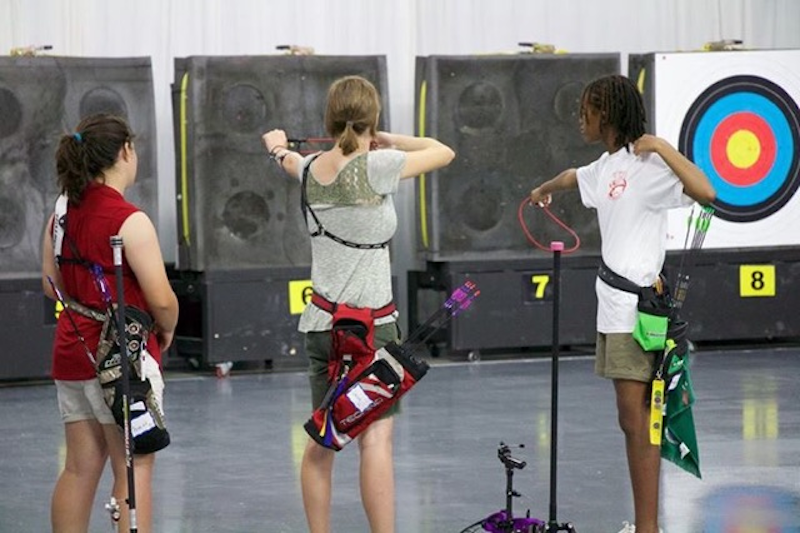A clean release ensures consistency, better tune and faster arrow speed. An amazing 3-for-1 deal, right? Let’s evaluate your release to see what needs work, and how you can fix it.
To evaluate your release, video yourself shooting, or schedule a lesson with a coach. You can find a coach here.
One easy way to identify a good release is if your hand slides straight back without leaving your face. It feels like pulling on a string that’s suddenly cut. It’s a crisp, clean break.
A poor release has several traits. A common bad release is called a “pluck.” Your hand leaves your face, and looks like you’re waving good-bye to the arrow. Plucks” are usually caused by excess tension in your hand, forearm and bicep.
Another common bad release is a “collapse,” which occurs when your hand moves forward, not backward. A collapse causes low shots, and indicates poor alignment and lost back tension. In other words, you stopped pulling.

How do archers make a clean release? We can’t open our fingers fast enough to avoid the bowstring, but simply opening our fingers won’t produce a clean release. Instead, try to relax your fingers so the bowstring pushes them out of its way. The less resistance the bowstring encounters, the cleaner the release.
It’s much easier to relax your fingers if you first relax the muscles in your hand, wrist, forearm and bicep. By removing all that muscle tension, you can use your bone structure and large muscle groups in your back to support the bow’s draw weight.
The specific back muscles best used in archery are the rhomboids around your shoulder blade. To find your rhomboids, make a thumbs-up with your hand and touch your back. Your thumb will touch your rhomboids.

To learn how to use back tension in archery, work with a stretch band or low draw-weight bow. Pull the stretch band and imagine a string tied to your elbow. Pretend the string is pulling your elbow back and around your head as you reach full draw. When your elbow rotates behind your head, you should feel your shoulder blade moving closer to your spine. That feeling and the rhomboids’ position is back tension. After you master back tension on the stretch band, try it with your bow. Once you properly engage your back, your release will improve dramatically.
Mastering the release is difficult and it takes time, but good help makes it easier. A good coach can teach the finer points of back tension and your release. Find your coach here.



